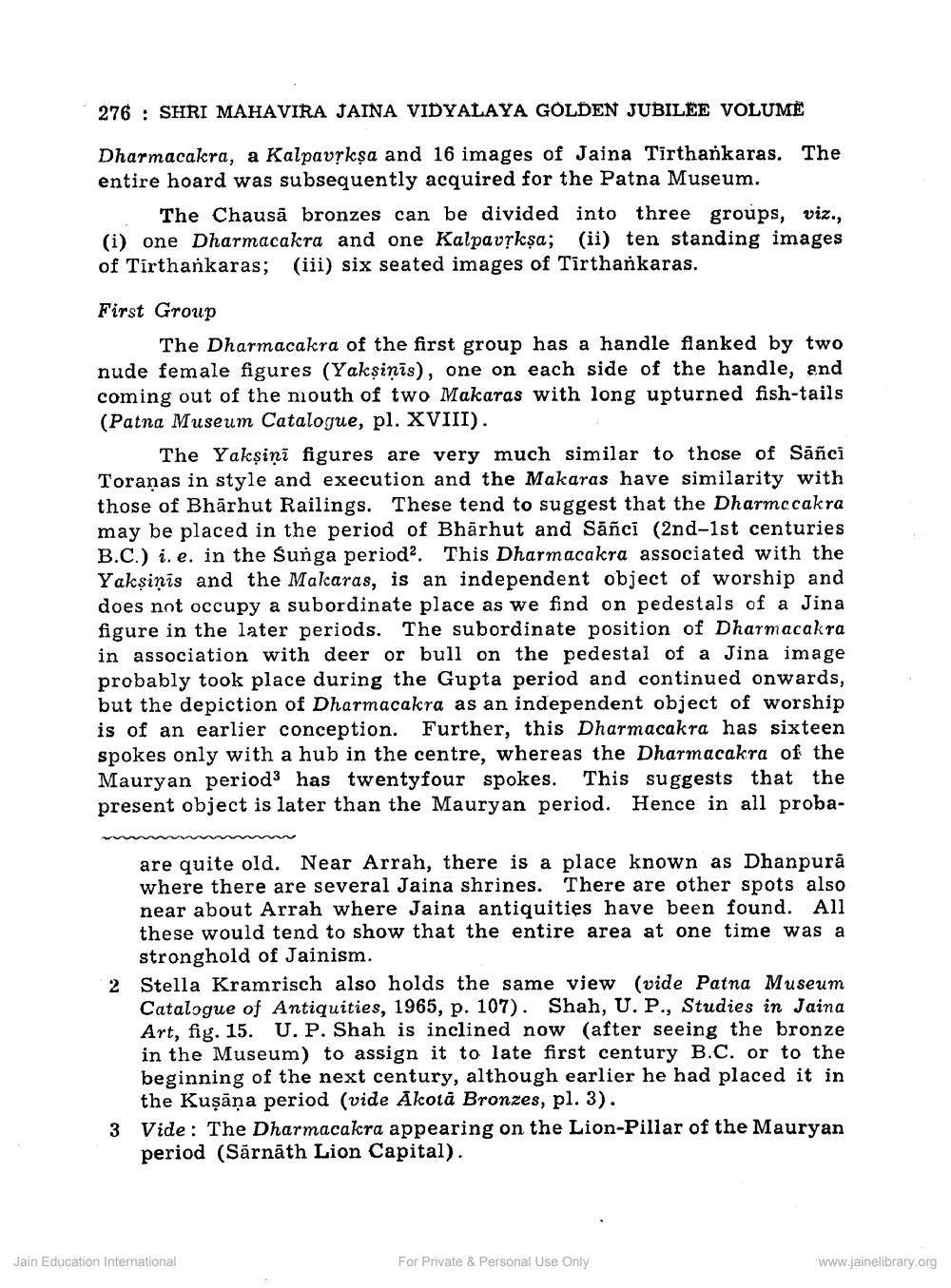Book Title: Jaina Bronzes the Patna Museum Author(s): Harikishor Prasad Publisher: Z_Mahavir_Jain_Vidyalay_Suvarna_Mahotsav_Granth_Part_1_012002.pdf and Mahavir_Jain_Vidyalay_Suvarna_ View full book textPage 2
________________ 276 : SHRI MAHAVIRA JAINA VIDYALAYA GOLDEN JUBILEE VOLUME Dharmacalra, a Kalpavrkșa and 16 images of Jaina Tirthankaras. The entire hoard was subsequently acquired for the Patna Museum. The Chausā bronzes can be divided into three groups, viz., (i) one Dharmacakra and one Kalpavşkşa; (ii) ten standing images of Tirthankaras; (iii) six seated images of Tirthankaras. First Group The Dharmacakra of the first group has a handle flanked by two nude female figures (Yakşinis), one on each side of the handle, and coming out of the mouth of two Makaras with long upturned fish-tails (Patna Museum Catalogue, pl. XVIII). The Yakşiņi figures are very much similar to those of Sāñci Toranas in style and execution and the Makaras have similarity with those of Bhārhut Railings. These tend to suggest that the Dharmccakra may be placed in the period of Bhārhut and Sāñci (2nd-1st centuries B.C.) i.e. in the Sunga perioda. This Dharmacakra associated with the Yakşinis and the Makaras, is an independent object of worship and does not occupy a subordinate place as we find on pedestals of a Jina figure in the later periods. The subordinate position of Dharmacakra in association with deer or bull on the pedestal of a Jina image probably took place during the Gupta period and continued onwards, but the depiction of Dharmacakra as an independent object of worship is of an earlier conception. Further, this Dharmacakra has sixteen spokes only with a hub in the centre, whereas the Dharmacakra of the Mauryan period has twentyfour spokes. This suggests that the present object is later than the Mauryan period. Hence in all proba are quite old. Near Arrah, there is a place known as Dhanpurā where there are several Jaina shrines. There are other spots also near about Arrah where Jaina antiquities have been found. All these would tend to show that the entire area at one time was a stronghold of Jainism. 2 Stella Kramrisch also holds the same view (vide Patna Museum Catalogue of Antiquities, 1965, p. 107). Shah, U. P., Studies in Jaina Art, fig. 15. U. P. Shah is inclined now (after seeing the bronze in the Museum) to assign it to late first century B.C. or to the beginning of the next century, although earlier he had placed it in the Kuşāņa period (vide Akotā Bronzes, pl. 3). 3 Vide: The Dharmacakra appearing on the Lion-Pillar of the Mauryan period (Sārnāth Lion Capital). Jain Education International For Private & Personal Use Only www.jainelibrary.orgPage Navigation
1 2 3 4 5 6 7 8 9 10 11 12 13 14 15
